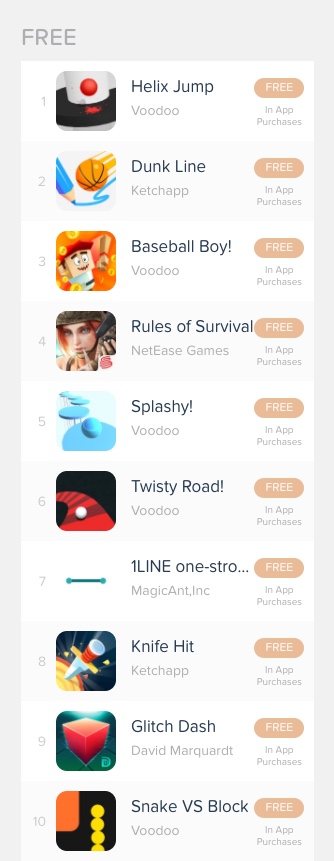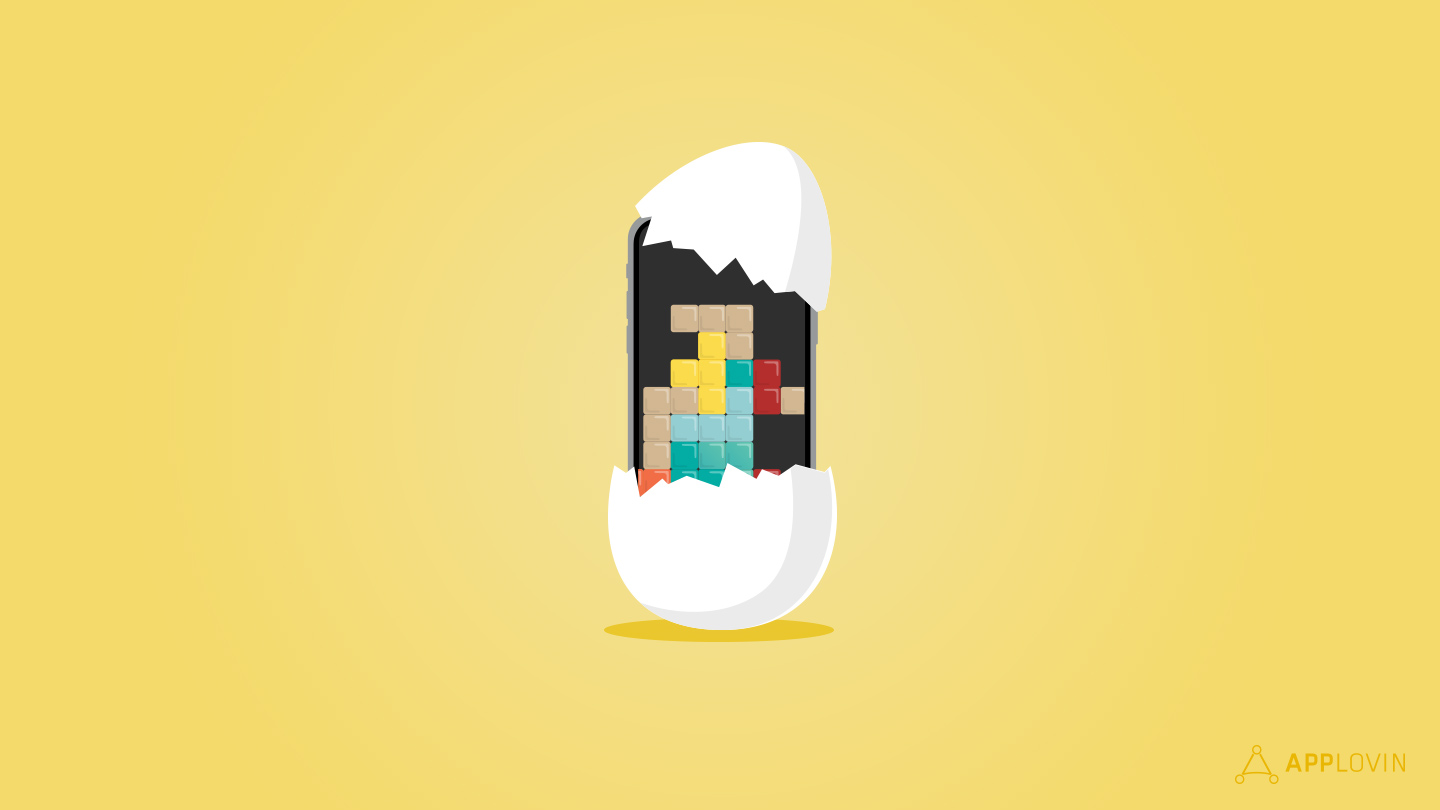Over the past year, mobile game companies like Ketchapp (owned by Ubisoft) and Voodoo have been slowly climbing up the app store ranks with tons of different games. Noting this trend, we came up with a name for these types of games: hyper-casual.
If you haven’t heard of the term “hyper-casual,” we highly recommend you read our breakdown of mobile gaming’s latest genre. In short, hyper-casual games are characterized by lightweight, instantly playable games that are often addictive because of short session length and fun game mechanics. While simple games have always been around, the hyper-casual genre is different because of its ability to go viral and scale quickly.
Because of this, 2017 was the year hyper-casual games broke into the mainstream. Here’s why.
Adapting to a mature mobile games market
Perhaps the biggest reason for the success of hyper-casual games is the maturation of the mobile games market. Gone are the days when users were willing to pay several dollars for a mobile game. Thanks to Angry Birds, the race to the bottom resulted in the normalization of $0.99 mobile apps and games.

Top Free – iOS games at the time of writing.
This spawned the era of free-to-play games with in-app purchases and in-game economies as a gateway to “whales,” which was a term coined for a handful of dedicated players who would spend a lot in games. These whales would make up the majority of the revenue for mobile games, which was fine, but risky, as developers would be at the mercy of a handful of players. With hyper-casual, developers distribute revenue generation—and risk—across thousands of users.
Another challenge for today’s developers is the fact that there are hundreds of thousands, or even millions, of mobile games to choose from, making it increasingly difficult for smaller devs to stand out from the stalwarts of the industry. As a result, new strategies emerged like the shotgun approach of hyper-casual games, where instead of putting all of your efforts into one game, you spread it out among many.
Since hyper-casual games are so simple to develop and launch, hyper-casual game studios have taken to developing and releasing a ton of mobile games at the same time. In 2017 alone, Voodoo released 29 games in the App Store, and 11 of them hit the top 10. The company released 14 games alone in November 2017. Today, we see the monumental success of hyper-casual games like Snake vs. Block (#17 action game on iOS), Dune (#22 action game on iOS), and Baseball Boy (#1 sports game on iOS) thanks to the scalability and virality of hyper-casual games.
But none of this would matter if hyper-casual games couldn’t scale or monetize. Thankfully, hyper-casual games do both extremely well. Hyper-casual games are usually monetized by a split between ads and in-app purchases, with some relying entirely on ads. This means it’s critical for hyper-casual developers to pick the right ad formats and adjust their frequency.
With this in place, hyper-casual games can scale extremely quickly with smart user acquisition. The enormous amount of game-centric ad inventory means hyper-casual developers can cross-promote in other games where players are already engaged and more likely to download games.
Hyper-casual games in 2018
While 2017 was the year hyper-casual games broke into the mainstream, with Apple highlighting the genre in its Best of 2017 list, we’re expecting 2018 to be the year that hyper-casual games shake up the top app charts. As of the time of this writing, two hyper-casual games (one from Voodoo and one from Ketchapp) are sitting at number 10 and 11 in the top free apps in the App Store. That puts these two hyper-casual games between Gmail and Netflix, which is incredible. Additionally, Voodoo is dominating the top 10 free games chart for iOS with 5 of its games. Eric Seufert of Mobile Dev Memo predicts there will be a “fundamental reshuffle” of the Top Grossing Chart and that many of the “perennials” will struggle to remain in the top 10.
Now that the secret is out about hyper-casual, competition will be fierce and standing out from the crowd will become increasingly more difficult among hyper-casual game developers. Add the fact that people don’t really care if they’re playing a copy of a game and you can see why copying runs rampant.
Even with these challenges, it’s clear hyper-casual games will continue dominating the top app store charts in 2018. Their addictive nature and ability to scale will draw in more developers to create for mobile gaming’s newest genre. If you’re a developer thinking about launching a hyper-casual game, make sure your UA strategy is solid and that you have a unique game in a crowded market. You may fail along your journey, but that’s part of the process, so embrace it.








